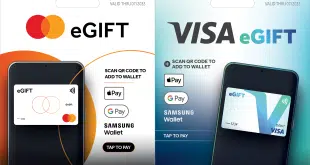This article begins a six-part series by industry analyst Steve Mott that examines the growing economic tensions and structural conflicts that are drawing the acquiring side of the card processing business into a sustained battle with card issuers. Five Digital Transactions News installments assess the divergent impacts of this conflict on key stakeholders in the payments space: alternative payments providers; merchants and ISOs; big issuers that control the card business; smaller issuers that want back into the business; and the newly public bank card associations. The series concludes in the September issue of Digital Transactions magazine with an exploration of how reconstituted processors will determine the outcome of this epic struggle. The surest sign that something isn't working any more is the emergence of viable competition. In card payments, the relatively slow adoption to-date of alternative payments in effect has discredited critics of the bank-card-association-dominated business?even in the face of all of its mounting legal and regulatory challenges. But over the summer, the winds of change have finally struck, and alternative payment options are set to move full-sail into the looming battle between acquirers and issuers over the very course of the card-payments business.
Item one was the revelation that PayPal was serving one of its merchants?Moosejaw Mountaineering?at the point-of-sale as well as online. Moreover, several larger multichannel merchants report being asked in surveys what they would need to consummate exchanges, refunds, and upsells of PayPal transactions made online at their physical stores. The fast-growing subsidiary of eBay claims it isn't moving to POS, but its estimated 12% market share of Internet transactions after just six years of operation proves it is a force to be reckoned with in any channel.
Less evident was the realization of how much money PayPal is now taking out of the business that otherwise would have accrued to traditional stakeholders. In 2006, PayPal reported that merchant processing fees averaged 3.65% of payment volume, while processing costs (optimizing a mix of bank cards, automated clearing house transfers, and account-to-account loads) were 1.11%. Take out 27 basis points of chargebacks and fraud, and PayPal was left with a 2.27% margin on its transaction volume.
That's a 62% net margin?merely by arbitraging the bank networks to evoke a better business model and giving a fairer deal to merchants (lower up-front fees, and guaranteed transactions in the backend) in the process. With estimated U.S. online volume of $30 billion that year, PayPal's margin adds up to nearly $900 million. Add a couple of years of 25%-to-30% growth, and the net take out of the system easily exceeds a billion dollars a year!
Item two was the Department of Justice's agreement forcing Visa to amend its rules prohibiting merchant steering of consumers among payment options, and?in particular?elimination of its 4-year-old ban on use of PINless debit to make efficient bill payments online and via the telephone. Visa's Interlink EFT network forbade use of its signature-debit cards for such innovations, favoring its higher interchange?but less reliability?over the more efficient PINless option. Interlink's ban kept 40% of ATM debit cards from being used in PINless transactions, and slowed market adoption perceptibly.
But late last year, the Internal Revenue Service decided that PINless debit was such a good option for taxpayers compared to signature cards that it approved the payment option for the 60% of cardholders whose banks were not afflicted with the Interlink ban. Since the IRS passes card-processing fees along to consumers, taxpayers' fees with PINless debit were capped at about $1 or $2 on a typical $800 payment, compared with an average of $20 or $25 with signature debit. So now, only the most recalcitrant issuer will continue to resist an option so many consumers and merchants demand.
Item three: Over the Fourth of July weekend, the Green Dot network began national TV advertising to promote its prepaid Visas and MasterCards. With 2 million prepaid cards issued to date, and a growing retailer network of more than 50,000 stores for reloads that includes the likes of Wal-Mart, Kroger, Walgreens, and CVS, who needs banks? Green Dot's marketing tag lines emphasize that point: “Easier than a bank,” with “no credit checks” and “no overdrafts.”
So all those paycheck-to-paycheck households paying $18 billion a year in account-overdraft fees, $7 billion in fees on signature-debit card transactions with non-sufficient funds, and $8 billion in credit card penalty fees, now have prepaid payment options from Green Dot, NetSpend, and Incomm that still work everywhere, but are much 'safer than a bank' whose cards bear so many nasty surprises.
With Google, BillMeLater, and Amazon Flexible Payments offering attractive online options that bypass the conventional payments infrastructure altogether (next week's article), and small-bank options waiting in the wings (article four), it would be foolish to doubt that the market will be getting very crowded for bank cards in the very near future.?Steve Mott





